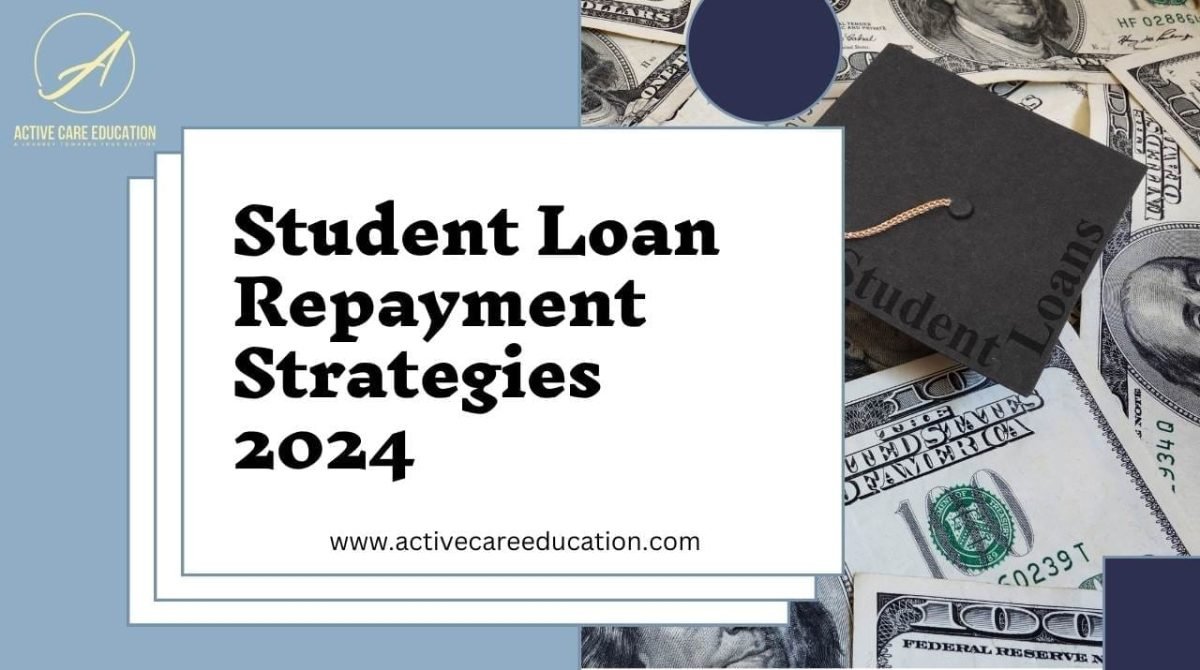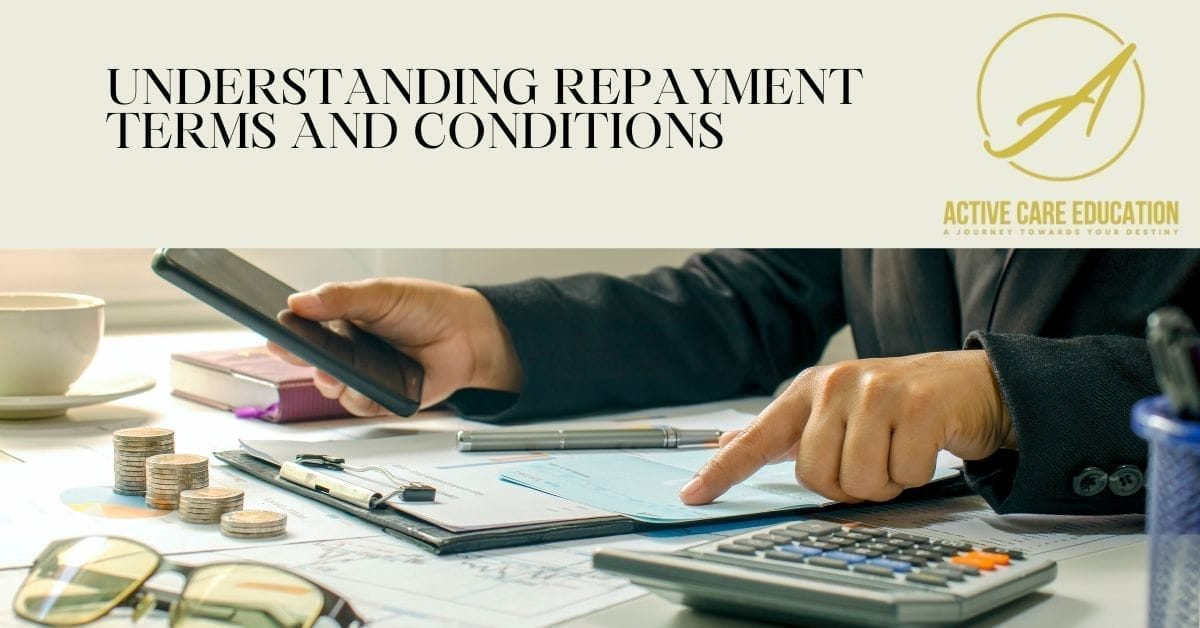
Student Loan Repayment Strategies 2024
Student loan repayments effectively are crucial for financial health. It helps avoid debt accumulation and credit score damage. Timely payments can lead to debt freedom faster and reduce stress. Planning and budgeting are key strategies for staying on track and ensuring financial stability in the long run.
In 2024, graduates face challenges like managing big student loans, but there are also chances to get help. With new plans and support, paying back loans can be easier. Graduates need to explore these options and find ways to reduce their debt while moving forward with their careers.
Understanding Your Student Loans
Student loans are borrowed money to pay for education. You must repay them with interest. Research options, understand terms, and plan repayment to manage effectively.
When dealing with student loans, it’s important to know the differences between federal and private ones, how to check your loans, and the different ways you can pay them back. Here’s a simple guide to help you understand these things:
Federal Student Loans Vs. Private Student Loans: Key Differences and Implications for Repayment
Feature | Federal Student Loans | Private Student Loans |
Interest Rates | Fixed rates set by the government; are often lower than private loans. | Can be fixed or variable, typically higher and based on credit. |
Repayment Plans | Multiple plans are available, including income-driven repayment options. | Fewer options; typically standard repayment schedules. |
Loan Forgiveness Options | Several forgiveness programs are available, such as Public Service Loan Forgiveness. | Rarely offered; loan forgiveness is rare. |
Requirements for Approval | It is not based on credit history for most loans; doesn’t require a cosigner. | Based on credit history; a cosigner may be needed for better rates. |
Implications for Financial Hardship | Protections like deferment and forbearance are available. | Limited options for deferment and forbearance; less flexibility. |
This table shows the main ways federal and private student loans are different. Understanding these differences is important for knowing how repaying them works.
Federal loans have more flexible options for paying them back. They might even forgive your loan in certain situations. They’re usually easier to deal with when you’re having money problems.
Federal loans care less about your credit history and usually have lower interest rates. Private loans look at your credit score more and might need someone else to agree to pay if you can’t. They don’t offer as many ways to pay back your loan and don’t give as much protection. These differences can affect how you plan to pay back your loans and manage your money.
Assessing Your Student Loan Portfolio
Understanding your student loan portfolio is essential for managing your finances and making informed decisions about student loan repayments. Here’s a straightforward guide to help you assess your total loan balance, and interest rates, and identify your loan servicer(s):
Check Your Total Loan Balance
Federal Student Loans: For federal student loans, you can find your total loan balance by logging into your account on the National Student Loan Data System (NSLDS) at nslds.ed.gov. This platform provides a comprehensive view of all your federal student loans.
Private Student Loans: If you have private loans, you’ll need to check your balance with each private lender. You can find your lenders by reviewing your credit report, which lists all your debts. Most credit reporting agencies offer free access to your credit report annually.
Understand Your Interest Rates
Each loan has its interest rate, which affects how much you’ll pay back over time. For federal loans, check the NSLDS or your loan servicer’s website. For private loans, contact your lender directly or check your loan agreement.
Knowing your interest rates helps you understand how your loan accumulates over time and can influence repayment strategies, such as deciding which loan to pay off first.
Identify Your Loan Servicer(s)
Federal Student Loans: For federal student loans, you can find your total loan balance by logging into your account on the National Student Loan Data System (NSLDS) at nslds.ed.gov. This platform provides a comprehensive view of all your federal student loans.
Private Student Loans: If you have private loans, you’ll need to check your balance with each private lender. You can find your lenders by reviewing your credit report, which lists all your debts. Most credit reporting agencies offer free access to your credit report annually.
Managing Student Loan Repayments
Understanding your student loan portfolio is the first step in managing your repayments effectively. Once you have a clear picture of what you owe, to whom, and under what terms, you can create a budget and a repayment strategy that works for you. Consider factors like which loans have the highest interest rates and your repayment plan options to save money in the long run.
Remember, staying informed and proactive about your student loans is key to managing your debt successfully and achieving your financial goals.

Understanding Repayment Terms and Conditions
Understanding student loan repayments is crucial for managing your finances wisely. When you borrow money for education, you’ll need to pay it back under certain conditions. Repayment plan options vary, offering flexibility in how much you pay each month and for how long. Some plans are based on your income, making payments more affordable based on what you earn.
A grace period is a time after finishing school during which you don’t have to make payments yet, allowing you to find employment. However, not all loans offer this, so check your loan’s terms.
Be aware of penalties for late or missed payments. These can include additional fees and increased interest, making your loan more expensive over time. It’s important to stay on top of your payments or contact your lender if you’re having trouble paying. This way, you can avoid unnecessary costs and keep your student loan repayments manageable.
When dealing with your student loans, it’s important to make a plan that fits your money situation. Here’s how you can do it:
Strategies for Effective Student Loan Repayment
When dealing with your student loans, it’s important to make a plan that fits your money situation. Here’s how you can do it:
Developing a Student Loan Repayment Plan
Lorem ipsum dolor sit amet, consectetur adipiscing elit. Ut elit tellus, luctus nec ullamcorper mattis, pulvinar dapibus leo.
Budgeting for Repayments
Managing your Student Loan Repayment and other bills is important. Keep an eye on what you spend, cut out things you don’t really need, and make sure to pay your loans first. Even small changes can help you save a lot in the long run.
Choosing the Right Repayment Plan
There are several repayment plans available:
- Standard Repayment Plan: Fixed payments for up to 10 years.
- Graduated Repayment Plan: Payments start lower and gradually increase, typically every two years.
- Income-Driven Repayment Plans: Payments are recalculated each year based on your income and family size.
Each has its pros and cons, so assess your financial outlook and career trajectory to determine which fits best.
Consolidation and Refinancing
- Consolidation puts all your federal loans together so you only have to make one payment each month. It can make paying back loans easier and might let you choose from more repayment options.
- Refinancing means getting a new loan from a private lender to pay off your old loans, often with a lower interest rate. It’s a good option if you have a good credit score and steady income.
To handle paying back student loans well, you need a plan that matches your money situation, careful spending, choosing the best repayment option, and thinking about combining or changing loans if it helps you.
Final Thought
To handle Student Loan Repayment well, keep track of due dates and how much to pay each time. Think about signing up for autopay for easier management. Look into plans where your payments are based on your income and combine loans to make it simpler.
Stay in touch with the people handling your loans to talk about any worries or if your money situation changes. Keep up-to-date about help available and programs that could help you. Take the lead in finding ways to get some of your loans forgiven or help with payments.
Stay positive by focusing on progress and making small, reachable goals. Remember, managing student loans takes time, but staying aware and taking action can help you succeed financially.





